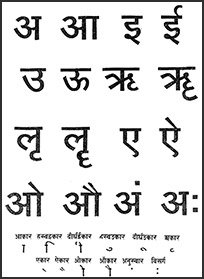Agniveshyayana, Āgniveśyāyana, Agniveśyāyana: 7 definitions
Introduction:
Agniveshyayana means something in Hinduism, Sanskrit. If you want to know the exact meaning, history, etymology or English translation of this term then check out the descriptions on this page. Add your comment or reference to a book if you want to contribute to this summary article.
The Sanskrit terms Āgniveśyāyana and Agniveśyāyana can be transliterated into English as Agnivesyayana or Agniveshyayana, using the IAST transliteration scheme (?).
In Hinduism
Purana and Itihasa (epic history)
Source: Wisdom Library: Bhagavata PuranaĀgniveśyāyana (आग्निवेश्यायन):—A brahminical dynasty of Agniveśya (son of Devadatta), who was the fire-god Agni himself. (see Bhāgavata Purāṇa 9.2)
Source: Cologne Digital Sanskrit Dictionaries: The Purana IndexĀgniveśyāyana (आग्निवेश्यायन).—A brahma-kula originating from Jātūkarṇa.*
- * Bhāgavata-purāṇa IX. 2. 22.

The Purana (पुराण, purāṇas) refers to Sanskrit literature preserving ancient India’s vast cultural history, including historical legends, religious ceremonies, various arts and sciences. The eighteen mahapuranas total over 400,000 shlokas (metrical couplets) and date to at least several centuries BCE.
Vyakarana (Sanskrit grammar)
Source: Wikisource: A dictionary of Sanskrit grammarAgniveśyāyana (अग्निवेश्यायन).—Writer of Vedic grammar, mentioned in the Taittirīya prātiśākhya. cf. नाग्निवेश्या-यनस्य (nāgniveśyā-yanasya) (मते उदात्तपरः स्वरितपरो वा अनुदात्तः स्वरितं नापद्यते इति न (mate udāttaparaḥ svaritaparo vā anudāttaḥ svaritaṃ nāpadyate iti na)) Tait. Pr. XIV.32.

Vyakarana (व्याकरण, vyākaraṇa) refers to Sanskrit grammar and represents one of the six additional sciences (vedanga) to be studied along with the Vedas. Vyakarana concerns itself with the rules of Sanskrit grammar and linguistic analysis in order to establish the correct context of words and sentences.
Languages of India and abroad
Sanskrit dictionary
Source: Cologne Digital Sanskrit Dictionaries: Aufrecht Catalogus CatalogorumĀgniveśyāyana (आग्निवेश्यायन) as mentioned in Aufrecht’s Catalogus Catalogorum:—ibid. 14, 32.
Source: Cologne Digital Sanskrit Dictionaries: Monier-Williams Sanskrit-English Dictionary1) Āgniveśyāyana (आग्निवेश्यायन):—[from āgnāpauṣṇa] mfn. descending from Agniveśya (as a family), [Bhāgavata-purāṇa]
2) [v.s. ...] m. Name of a grammarian, [Taittirīya-prātiśākhya]
[Sanskrit to German]
Sanskrit, also spelled संस्कृतम् (saṃskṛtam), is an ancient language of India commonly seen as the grandmother of the Indo-European language family (even English!). Closely allied with Prakrit and Pali, Sanskrit is more exhaustive in both grammar and terms and has the most extensive collection of literature in the world, greatly surpassing its sister-languages Greek and Latin.
See also (Relevant definitions)
Full-text: Agniveshya, Agnivaishyayana, Kanina, Aggivessana, Sudharma, Saccaka.
Relevant text
Search found 3 books and stories containing Agniveshyayana, Āgniveśyāyana, Agnivesyayana, Agniveśyāyana; (plurals include: Agniveshyayanas, Āgniveśyāyanas, Agnivesyayanas, Agniveśyāyanas). You can also click to the full overview containing English textual excerpts. Below are direct links for the most relevant articles:
Kalpa-sutra (Lives of the Jinas) (by Hermann Jacobi)
The Bhagavata Purana (by G. V. Tagare)
Chapter 2 - History of Karūṣa and other four sons of Manu < [Book 9 - Ninth Skandha]
Shrimad Bhagavad-gita (by Narayana Gosvami)
Verse 18.41 < [Chapter 18 - Mokṣa-yoga (the Yoga of Liberation)]